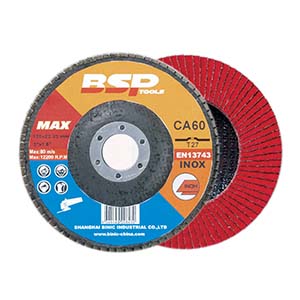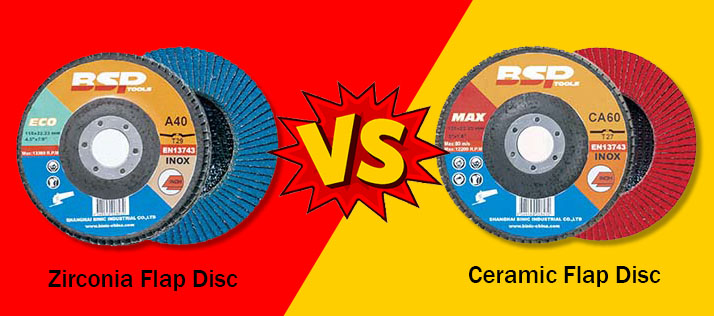Flap discs play a crucial role in the world of abrasive tools, and among them, Zirconia and Ceramic flap discs are highly regarded for their exceptional performance. In this article, we will delve into the key aspects that set these two abrasive discs apart, including service life, efficiency, operating temperature, and their respective applications.
1. What is Zirconia flap Disc?
- Much tougher than pink and brown aluminum oxide disc discs, which makes zirconia flap discs ideal for high pressure machining and grinding applications.
- It also have good heat resistance. Zirconia Abrasive flap discs work best in the range of 24 to 120 grit
- Zirconia flap discs are commonly used in general steel processing plants, where they have become the preferred abrasive belt and disc for grinding and finishing steel, and they are also commonly used in stainless steel applications.
- Although zirconia is harder than alumina, it is still difficult to effectively grind rolled scale.
| Image | Inch | Metric(mm) | Type | Grit |
 |
4”x5/8” | 100×16 | T27/29 | ZA40-120# |
| 4.5”x7/8” | 115×22.2 | T27/29 | ZA40-120# | |
| 5”x7/8” | 125×22.2 | T27/29 | ZA40-120# | |
| 6”x7/8” | 150×22.2 | T27/29 | ZA40-120# | |
| 7”x7/8” | 180×22.2 | T27/29 | ZA40-120# |
More zirconia alumina flap disc
2. What is a Ceramic Flap Disc?
- Ceramic disc discs have a microcrystalline habit, and their structure is more uniform than that of alumina or zirconia flag wheels. This microcrystalline habit means that they can penetrate in a controlled manner, expanding the range of available applications.
- Ceramic flap discs have proven revolutionary in aluminum castings, low carbon steel scale, stainless steel finishing, and titanium alloys commonly used in many aerospace applications.
- It is important to note that ceramic abrasive flap discs are particularly sensitive to heat and pressure, which means that a properly designed process is essential for its successful use.
| Image | Inch | Metric(mm) | Type | Grit |
 |
4”x5/8” | 100×16 | T27/29 | C40-120# |
| 4.5”x7/8” | 115×22.2 | T27/29 | C40-120# | |
| 5”x7/8” | 125×22.2 | T27/29 | C40-120# | |
| 6”x7/8” | 150×22.2 | T27/29 | C40-120# | |
| 7”x7/8” | 180×22.2 | T27/29 | C40-120# |
3.Zirconia vs Ceramic Flap Disc
Both Zirconia and Ceramic are considered high-performance die. Both have a service life that is several times longer than alumina (very often, 3-5 times longer). But longer life is only part of the advantage. These high-quality grains are “self-ground” during use, which allows them to continue to be effectively cut until the grain is used up.
- Ceramic particles are the latest technology. Their fine-grained structure causes smaller fragments to break during the grinding process, which gives them a 50-200% longer life than Zirc
- Zirconia flag discs remove material faster than ceramic flag discs.
- Ceramic flap discs operate cooler than zirconia and alumina flap discs, reducing heat build-up.
- Zirconia flap disc: For grinding and finishing of stainless steel, sheet metal, tool steel, heat treated steel, and welds. For heavy applications.
- Ceramic disc disc: For grinding stainless steel, titanium, inconel and other hard metals.
Conclusion:
In the choice between Zirconia and Ceramic flap discs, understanding their differences is crucial for achieving optimal results in various grinding and finishing tasks. While both types offer extended service life compared to alumina, the decision should be based on the specific requirements of the job at hand. Whether you prioritize speed, heat management, or material compatibility, selecting the right abrasive tool will lead to improved efficiency and a more successful outcome in your machining and grinding endeavors.

